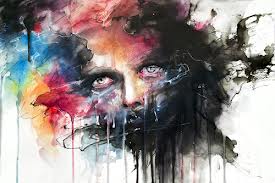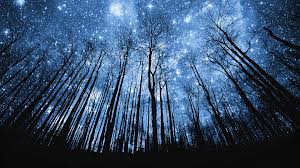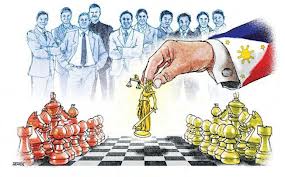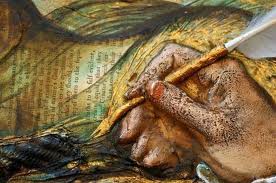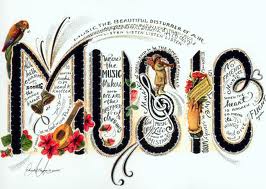MUZICA
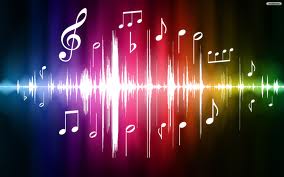
[ Sursa Informativă:
http://www.preferatele.com/docs/muzica/noi/muzica131013141814.php ]
Muzica – este o forma de exprimare specifica omului, un limbaj prin care acesta isi comunica ideile, sentimentele, experienta de viata intr-o maniera distincta. In practica muzicala, omul foloseste vocea,dar foloseste si instrumente musicale,create de el, pentru a imbogatii paleta coloristica sonora(timbrala).
In studiul vocal trebuie urmariti toti parametric melodiei, identificati cu insusirile sunetului musical:
– Inaltimea – se refera la calitatea sunetului de a fi mai grav(jos), sau mai acut (inalt),cat si mediu,dupa numarul de vibratii pe secunda, frecveta,produs de coardele vocale.
– Durata – se refera la calitatea sunetelor de a fi produse neintrerupt pe o perioada mai scurta sau mai lunga de timp, realizata prin emiterea cu suflu continuu.
– Intensitatea – sunetelor musicale, depinde de forta cu care coloana de aer este dirijata spre corzile vocale.
Timbrul vocal – proprietatea sunetelor musicale de a se deosebi dupa sursa care le produce. Timbrul vocal poate fi deosebit intre vocile soliste , sau poate constitui timbrul unei formatii corale:
Voci solo: femei – soprano, mezzosoprana, alto,
Barbati – tenor , bariton, bas,
Formatii : cor de voci egale sic or mixt – a cappela(fara acompaniament), cu acompaniament,
Timbre instrumentale – in functie de materialul, forma si modul in care sunt produse, toate instrumen-tele,au o culoare sonora specifica;
– Instrumente de suflat : din lemn- flaut, oboi, clarinet, fagot
Din alama- corn, trompeta,trombone,tuba
– Instrumente cu coarde : prin frecare cu arcusul – viori, viole, violoncele, contrabasi,
Prin ciupire – chitara, mandolin, harpe,
Prin lovire – pian tambal,
– Instrumente de percutie : acordabile – timpanul, xilofonul, celesta
Neacordabile – toba mica, mare, gong, tamburina
Tipuri de orchestra – de camera si simfonice.
Elemente de structura a melodiei – linie melodic(inaltimea sunetelor, alteratiile)
Ritmul,
Masura,
Tempoul (miscarea
Nuantele (dinamica)
Tonalitatile – se prezinta sub 3 variante : natural , armonic(cu treapta a 7a alterata suitor)
Melodic (cu treptele a 6a si a 7a alterate suitor)
Scarile – cantecele care au la baza o scara muzucala simpla, formata din 2ua ,3,4 sunete, se numesc scari oligorcice.
– Scarile formate din 5 sunete se numesc pentatonic sau pentacordice
– Scarile formate din 6 sunete se numesc hexatonice sau hexacordice
Aceste scari de 5 si 6 se intalnesc in folclor si se incadreaza in sistemul scarilor modale.
– Scarile formate din 7 sunete, formeaza modurile populare, si sunt cunoscute cu denumiri stabi-lite in Evul Mediu: Ionian , dorian, eolian, lidian.
RITMICA SI METRICA
Periodicitatea constanta a accentelor, determina metrica, impartirea in masuri.
Ritmul – reprezinta o succesiune organizata a duratelor sunetelor.
Timpul – constituie unitatea de baza pentru masurarea ritmului.
Metrul – se determina prin alternanta timpilor accentuate si neaccentuati.
Masura – reprezinta gruparea tuturor duratelor sunetelor ( ritmul) aflate intre doua bare (intre 2 timpi = accentuate).
Ritmul musical poate fi binar(din 2 in 2 timpi) si ternar(din 3 in 3 ).
Incadrarea ritmului binary si ternar in masuri determina metrica binara si metrica ternara.
Masurile
– Masuri simple – exista un singur accent in fiecare masura.
– Masuri compuse omogene – sunt formate din 2 sau mai multe masuri de acelasi fel, putand avea 2 sau mai multe accente in aceasi masura.
– Masuri compuse mixte – sunt formate din 2 sau mai multe masuri simple diferite ca factura ritmica(binar+ ternar), asezate in diverse combinatii: 2+3=5 3+2=5 2+3+2=7
TEMPO SI DINAMICA MUZICALA
Tempo-ul – exprima gradul de iuteala sau de miscare in care se interpreteaza o compozitie muzicala.se reprezinta prin termini de miscare notati la inceputul lucrarii (in limba italiana), si sunt insotiti uneori de indicatie metronomica.
Termenii principali pot fi : – propriu-zisi(se noteaza la inc. piesei musicale si sunt valabili pana la aparitia unui nou termen de miscare – miscari rare: largo, lento, adagio, larghetto
– Miscari mijlocii – andante, andantino, moderato, allegretto
– Miscari repezi – allegro, vivace, presto, prestissimo
– Termeni agogici care indica o rarire treptata(ralentando, ritenuto, allargando)
– Termeni agogici care indica o accelerare treptata: (accelerando, incalzando, precipitando, stringendo.
Dinamica muzicala – este gradul de tarie (forta, intensitate) in execurarea unei compozitii. Elementele cu care se lucreaza in dinamica se nm. Nuante si sunt de 2 feluri :
– Nuante cu intensitate uniforma
– Nuante cu intensitate progresiva.
[TEXTUL nu conţine diacritice!]
[pentru articol, Drepturi Depline Rezervate ©Preferatele.com]
